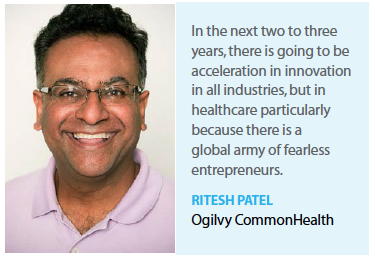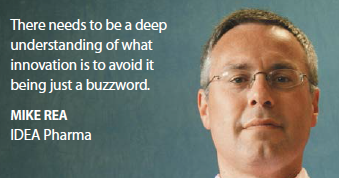 Business has entered a challenging new world full of opportunities for strategic innovation, and sustainability will be a major driver of these opportunities into the future. The new framework, which already dominates in a handful of the world’s leading companies, is solution-oriented strategic innovation for sustainability, according to Dr. Aileen Ionescu-Somers, director of IMD’s Global Center for Sustainability Leadership (CSL) Learning Platform, and Francisco Szekely, the Sandoz Family Foundation Professor of Leadership and Sustainability and director of the Global Center for Sustainability Leadership (CSL) at IMD. This translates, they say, into new ways to improve performance through innovation in all three dimensions of sustainable development: environmental, social, and economic.
Business has entered a challenging new world full of opportunities for strategic innovation, and sustainability will be a major driver of these opportunities into the future. The new framework, which already dominates in a handful of the world’s leading companies, is solution-oriented strategic innovation for sustainability, according to Dr. Aileen Ionescu-Somers, director of IMD’s Global Center for Sustainability Leadership (CSL) Learning Platform, and Francisco Szekely, the Sandoz Family Foundation Professor of Leadership and Sustainability and director of the Global Center for Sustainability Leadership (CSL) at IMD. This translates, they say, into new ways to improve performance through innovation in all three dimensions of sustainable development: environmental, social, and economic.
The two experts say the first type of innovation is characterized by incremental, step-by-step change. Many companies take this approach, largely because they are risk-averse, particularly in recent crisis-affected years. The second — radical innovation — means creating new business models, but doing it within a traditional business system. The third is the game changer: systemic transformation, which reinvents business systems that are faulty and unsustainable by their very nature. Very few companies are doing this today, however, some new and more reflective business models are emerging in some corners.
 Dr. Ionescu-Somers and Mr. Szekely say managers have started to speak differently about strategic innovation for sustainability in the last few years. It is no longer a niche area of business, but a concept that is moving into the mainstream. Furthermore, managers can take a number of approaches to encourage innovation for sustainability within their organizations. The starting point is to make sure that it is considered an opportunity, not a threat, and to help people realize that high-impact ideas are necessary to change customers’ mindsets. It is equally critical for organizations to ensure that they have the right incentives in place — fiscal, regulatory, and legal — to promote a longer-term view that supports sustainability. They say companies that are already making strategic innovation for sustainability report that there are a number of elements that can help to drive improvement in this area.
Dr. Ionescu-Somers and Mr. Szekely say managers have started to speak differently about strategic innovation for sustainability in the last few years. It is no longer a niche area of business, but a concept that is moving into the mainstream. Furthermore, managers can take a number of approaches to encourage innovation for sustainability within their organizations. The starting point is to make sure that it is considered an opportunity, not a threat, and to help people realize that high-impact ideas are necessary to change customers’ mindsets. It is equally critical for organizations to ensure that they have the right incentives in place — fiscal, regulatory, and legal — to promote a longer-term view that supports sustainability. They say companies that are already making strategic innovation for sustainability report that there are a number of elements that can help to drive improvement in this area.
Value the role that leadership will play, in conjunction with clear priorities and a linked corporate strategy, in making this happen.
Ensure that the business case for innovation is supported by thorough analysis and scenario planning.
Focus on client needs, leverage applied technology, and share knowledge through a transparent approach to research and development within the firm.
Ensure that strategy and sustainability performance are embedded in core processes, where they can drive change, rather than being add-ons.
Engage staff through a clear strategy, strong program office, companywide training, and effective communication of best practices.
Support strategy development and implementation by promoting an innovative, interactive corporate culture.
Innovation: Serious Business
“As long as there’s been business, there’s been innovation," says Shideh Sedgh Bina, co-founding partner of Insigniam. “That’s how businesses get started; they have new value to offer. I don’t know about whether it’s sustainable, but I can tell you it has to be sustainable and to the degree to which companies do innovation ad hoc and only focus on the products they create and what they make are limiting themselves. It’s the business of business to create new value."
Linda Lohr, Ph.D., senior director of portfolio strategy, worldwide research & development at Pfizer, says innovation is not only sustainable, it is essential for long-term survival.
“As mergers, acquisitions, and business deals thrive, diverse corporate cultures collide, erupting change and morphing established business models and practices," she says. “Organizations are compelled to innovate new approaches to maximize competitive advantage and to deliver on strategic objectives. Additionally, new regulatory filing paradigms such as breakthrough therapy designations and priority reviews promote innovation to meet the needs of precision medicine and rare disease patient populations and to successfully bring therapies to market faster."
According to Vas Narasimhan, global head drug development and chief medical officer at Novartis, The Global Burden of Diseases, Injuries, and Risk Factors Study (GBD) — the largest and most comprehensive effort to date to measure epidemiological levels and trends worldwide — shows ongoing unmet need in nearly every therapeutic area.
“We must set a high bar for innovation to substantially improve standards of care," he says. “The industry is addressing this need by taking advantage of the convergence of digital technology, big data, and the ease of genetic sequencing and gene editing. Likewise, Novartis leverages this convergence to upend the drug development process. We see a world where we can study a broader range of targeted therapies that can be tested in more efficient trials, allowing us to quickly bring the next wave of innovative solutions to patients."
Melinda Richter, head, Johnson & Johnson Innovation JLABS, says the urge to innovate is ingrained in human nature.
“As long as there is unmet need in healthcare, we will be driven to explore innovative solutions to improve the health and wellness of people around the world," she says. “We are committed to accelerating innovation at all stages of development and forming close relationships with innovators to determine how we can best support their ideas and commercial solutions for patients."
JLABS is part of the Johnson & Johnson Innovation network of initiatives that include four regional innovation centers — Asia-Pacific, Boston, California, and London; venture investing through JJDC; as well as Janssen Business Development for later-stage M&A. The full suite of cross-sector tools provided by Johnson & Johnson Innovation are designed to identify, access, and accelerate the best science — internal or external — at all stages of development and rapidly advance it through clinical research to reach patients in need.
“To be sustainable we have to continually innovate," says Amir Kalali, M.D., head, Neuroscience Center of Excellence at Quintiles, as well as a founder and co-chair of the scientific program committee of the CNS Summit. “Innovation can enable our ethical duty to conduct the next generation of clinical trials, including evidence-based design; leveraging crowdsourcing of knowledge; improved subject engagement; more inclusive, accessible, efficient, and affordable studies; improved subject recruitment and therefore timelines; radical new ways of continuous subject assessment; more transparency of data to subjects, investigators and data consumers; and more collaboration. These improvements will more likely lead to successful trials and better adherence, generate clinically meaningful data, and enable precision medicine."
Ritesh Patel, executive VP, chief digital officer, Ogilvy CommonHealth Worldwide, believes innovation needs to be taken seriously and should be brought in-house as a practice just as pharma has done over the past several years with other functions, such as CRM, CLM, automation, etc.
“And here’s why, in the next two to three years, there is going to be acceleration in innovation in all industries, but healthcare in particular because there is a global army of fearless entrepreneurs, fueled by global consumers, who are connected and willing to take a risk on a product to help them," he says. “This is just going to accelerate."
Mr. Patel believes innovation in the life-sciences industry is only just scratching the surface.
“What started in the United States and Europe is now in parts of Asia, and there are people waking up and realizing they have ubiquitous connectivity in Australasia, Africa, and Latin America; they have access to app developers who can build the process for them within weeks; they have the capability to reach millions of people very quickly," he says. “Ubiquitous connectivity, inexpensive technology, and access to funds aren’t going to go away. Anybody can go to Kickstarter, for example, to obtaining funding. The ability for entrepreneurs to connect around the world and find capabilities to build a prototype within weeks and then scale quickly will continue."
Mr. Patel encourages the senior leadership of the pharmaceutical industry to examine and understand all of the things they have to do right, from managing the discovery of the molecule to managing end-of-life products.
“I think they need to understand, even if it’s one area, how can they innovate and show the company or the shareholders or employees that there is a huge opportunity for their companies," he says.
 Mike Rea, CEO of IDEA Pharma, says there is some concern that innovation can become a buzzword in the same way that other terms such as patient-centricity have become overused, despite each being meaningful and sustainable.
Mike Rea, CEO of IDEA Pharma, says there is some concern that innovation can become a buzzword in the same way that other terms such as patient-centricity have become overused, despite each being meaningful and sustainable.
“The risk is that innovation becomes a buzzword delivered by management consultants as an area of focus for this year, and then they move on to the next thing next year," he explains. “I think if pharmaceutical companies can get better at launching what’s in their pipelines, this is at the core of innovation sustainability. At the same time, there needs to be a deep understanding of what innovation is to avoid it being just a buzzword." (PV)


















